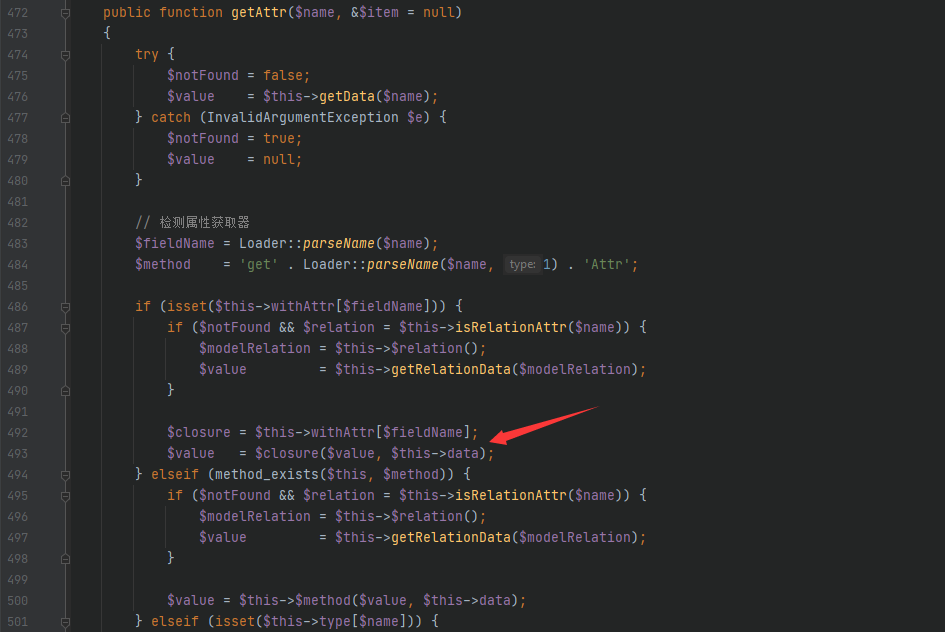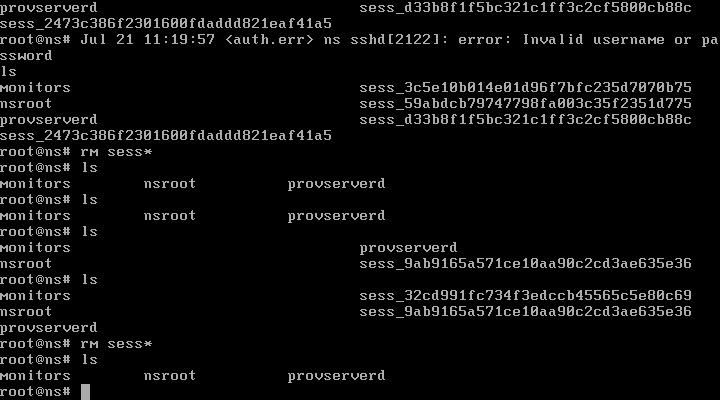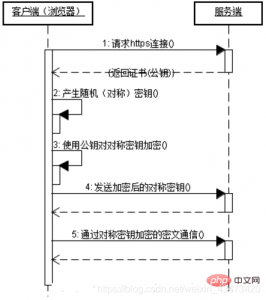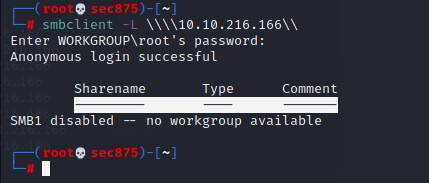简介
nginx 动态修改upstream不reload nginx模块,ngx_http_dyups_module分析。
主要围绕https://github.com/yzprofile/ngx_http_dyups_module/blob/master/ngx_http_dyups_module.c进行分析记录下来。
开整……
在create_main_conf的时候初始化这个数组
static void * ngx_http_dyups_create_main_conf(ngx_conf_t *cf)
{
…
if (ngx_array_init(&dmcf->dy_upstreams, cf->pool, 1024, sizeof(ngx_http_dyups_srv_conf_t)) != NGX_OK)
{
return NULL;
}
…
}
ngx_http_dyups_init
在dyups init的时把upstream中的conf取出来放进去。
初始化dy_upstream链以及全局ngx_http_dyups_deleted_upstream。
static ngx_int_t ngx_http_dyups_init(ngx_conf_t *cf)
{
…
dmcf = ngx_http_conf_get_module_main_conf(cf, ngx_http_dyups_module);
umcf = ngx_http_conf_get_module_main_conf(cf, ngx_http_upstream_module);
uscfp = umcf->upstreams.elts;
for (i = 0; i < umcf->upstreams.nelts; i++) {
duscf = ngx_array_push(&dmcf->dy_upstreams);
// 清零
ngx_memzero(duscf, sizeof(ngx_http_dyups_srv_conf_t));
duscf->pool = NULL;
// 赋值
duscf->upstream = uscfp[i];
duscf->dynamic = (uscfp[i]->port == 0
&& uscfp[i]->srv_conf && uscfp[i]->servers
&& uscfp[i]->flags & NGX_HTTP_UPSTREAM_CREATE);
duscf->deleted = 0;
// 赋值index
duscf->idx = i;
}
…
}
dyups share memory同步机制
shm初始化是在ngx_http_dyups_init_main_conf函数中实现的,同时设置了read_mesg的超时时间,并且指定了大小。
static char *ngx_http_dyups_init_main_conf(ngx_conf_t *cf, void *conf)
{
…
if (dmcf->read_msg_timeout == NGX_CONF_UNSET_MSEC) {
// 一秒一次
dmcf->read_msg_timeout = 1000;
}
if (dmcf->shm_size == NGX_CONF_UNSET_UINT) {
dmcf->shm_size = 2 * 1024 * 1024;
}
return ngx_http_dyups_init_shm(cf, conf);
…
}
static char *ngx_http_dyups_init_shm(ngx_conf_t *cf, void *conf)
{
…
shm_zone = ngx_shared_memory_add(cf, &dmcf->shm_name, dmcf->shm_size,
&ngx_http_dyups_module);
shm_zone->data = cf->pool;
// 加进去的这个名头的共享内存块的init函数会在初始化的时候统一调用
shm_zone->init = ngx_http_dyups_init_shm_zone;
…
}
static ngx_int_t ngx_http_dyups_init_shm_zone(ngx_shm_zone_t *shm_zone, void *data)
{
…
shpool = (ngx_slab_pool_t *) shm_zone->shm.addr;
sh = ngx_slab_alloc(shpool, sizeof(ngx_dyups_shctx_t));
if (sh == NULL) {
return NGX_ERROR;
}
// 全局变量,sh和shpool
ngx_dyups_global_ctx.sh = sh;
ngx_dyups_global_ctx.shpool = shpool;
// 初始化msg->queue
ngx_queue_init(&sh->msg_queue);
sh->version = 0;
sh->status = NULL;
…
}
ngx_http_dyups_init_process
该函数在启动进程时候调用,设定了一些定时器。
初始化共享内存,判断如果是非正常退出的,那么重新加载upstream配置。
static ngx_int_t ngx_http_dyups_init_process(ngx_cycle_t *cycle)
{
…
// 设定定时器来定时read msg,同步信息
timer = &ngx_dyups_global_ctx.msg_timer;
timer->handler = ngx_http_dyups_read_msg;
ngx_add_timer(timer, dmcf->read_msg_timeout);
// 拿到全局的pool和sh
shpool = ngx_dyups_global_ctx.shpool;
sh = ngx_dyups_global_ctx.sh;
ngx_shmtx_lock(&shpool->mutex);
// 初始化的时候肯定是NULL,,申请对应数量进程数的内存
if (sh->status == NULL) {
sh->status = ngx_slab_alloc_locked(shpool,
sizeof(ngx_dyups_status_t) * ccf->worker_processes);
if (sh->status == NULL) {
ngx_shmtx_unlock(&shpool->mutex);
return NGX_ERROR;
}
ngx_memzero(sh->status,
sizeof(ngx_dyups_status_t) * ccf->worker_processes);
ngx_shmtx_unlock(&shpool->mutex);
return NGX_OK;
}
ngx_shmtx_unlock(&shpool->mutex);
// 判断version,如果不是0的话,说明version已经在同步中被++了,所以是进程挂掉再被拉起来
if (sh->version != 0) {
//…
}
最核心的是ngx_http_dyups_read_msg函数,里面的是ngx_http_dyups_read_msg_locked函数
static void ngx_http_dyups_read_msg_locked(ngx_event_t *ev)
{
…
sh = ngx_dyups_global_ctx.sh;
shpool = ngx_dyups_global_ctx.shpool;
for (i = 0; i < ccf->worker_processes; i++) {
status = &sh->status[i];
if (status->pid == 0 || status->pid == ngx_pid) {
ngx_log_debug2(NGX_LOG_DEBUG_HTTP, ev->log, 0,
“[dyups] process %P update time %ui”,
status->pid, status->time);
// 遍历全部进程,将对应的pid赋值
status->pid = ngx_pid;
status->time = now;
break;
}
}
// 遍历消息队列
for (q = ngx_queue_last(&sh->msg_queue);
q != ngx_queue_sentinel(&sh->msg_queue);
q = ngx_queue_prev(q))
{
// 如果该msg的count和进程数一致,就是大家都同步过了,把这个msg删掉
if (msg->count == ccf->worker_processes) {
t = ngx_queue_next(q); ngx_queue_remove(q); q = t;
ngx_log_debug2(NGX_LOG_DEBUG_HTTP, ev->log, 0, “[dyups] destroy msg %V:%V”,&msg->name, &msg->content);
ngx_dyups_destroy_msg(shpool, msg);
continue;
}
found = 0;
for (i = 0; i < msg->count; i++) {
ngx_log_debug1(NGX_LOG_DEBUG_HTTP, ev->log, 0,”[dyups] msg pids [%P]”, msg->pid[i]);
if (msg->pid[i] == ngx_pid) {
found = 1;
break;
}
}
// 如果发现该进程了,就说明已经同步过了。
if (found) {
ngx_log_debug2(NGX_LOG_DEBUG_HTTP, ev->log, 0, “[dyups] msg %V count %ui found”, &msg->name, msg->count);
continue;
}
// 如果没发现的话,count++,pid更新
msg->pid[i] = ngx_pid;
msg->count++;
ngx_log_debug2(NGX_LOG_DEBUG_HTTP, ev->log, 0, “[dyups] msg %V count %ui”, &msg->name, msg->count);
// 取出来name和content
name = msg->name;
content = msg->content;
// 执行同步
rc = ngx_dyups_sync_cmd(pool, &name, &content, msg->flag);
if (rc != NGX_OK) {
ngx_log_error(NGX_LOG_ALERT, ev->log, 0, “[dyups] read msg error, may cause the ” “config inaccuracy,name:%V, content:%V”,&name, &content);
}
}
…
}
static ngx_int_t ngx_dyups_sync_cmd(ngx_pool_t *pool, ngx_str_t *name, ngx_str_t *content, ngx_uint_t flag)
{
…
} else if (flag == NGX_DYUPS_ADD) {
body.start = body.pos = content->data;
body.end = body.last = content->data + content->len;
body.temporary = 1;
rc = ngx_dyups_do_update(name, &body, &rv);
ngx_log_error(NGX_LOG_INFO, ngx_cycle->log, 0, “[dyups] sync add: %V rv: %V rc: %i”, name, &rv, rc);
if (rc != NGX_HTTP_OK) {
return NGX_ERROR;
}
return NGX_OK;
}
…
}
同步其他进程接受的信息,如果是当前进程处理的就要把信息添加到消息队列中。
ngx_dyups_update_upstream
ngx_int_t ngx_dyups_update_upstream(ngx_str_t *name, ngx_buf_t *buf, ngx_str_t *rv)
{
…
ngx_http_dyups_read_msg_locked(timer);
// 沙箱测试配置
status = ngx_dyups_sandbox_update(buf, rv);
if (status != NGX_HTTP_OK) {
goto finish;
}
status = ngx_dyups_do_update(name, buf, rv);
if (status == NGX_HTTP_OK) {
//把操作发到队列中去
if (ngx_http_dyups_send_msg(name, buf, NGX_DYUPS_ADD)) {
ngx_str_set(rv, “alert: update success “
“but not sync to other process”);
status = NGX_HTTP_INTERNAL_SERVER_ERROR;
}
}
…
}
ngx_http_dyups_send_msg函数分析
static ngx_int_t ngx_http_dyups_send_msg(ngx_str_t *name, ngx_buf_t *body, ngx_uint_t flag)
{
…
// 初始化整个msg,将name和body填充进去
sh->version++;
ngx_queue_insert_head(&sh->msg_queue, &msg->queue);
…
}
ngx_dyups_do_update
在update之前先find寻找对应的upstream。
static ngx_http_dyups_srv_conf_t * ngx_dyups_find_upstream(ngx_str_t *name, ngx_int_t *idx)
{
…
duscfs = dumcf->dy_upstreams.elts;
for (i = 0; i < dumcf->dy_upstreams.nelts; i++) {
duscf = &duscfs[i];
uscf = duscf->upstream;
if (uscf->host.len != name->len
|| ngx_strncasecmp(uscf->host.data, name->data, uscf->host.len)
!= 0)
{
continue;
}
*idx = i;
return duscf;
}
…
}
如果寻找到了idx赋值。
一旦发现寻找到了对应name的dy_upstream就先判断。
然后调用的是ngx_dyups_mark_upstream_delete函数
static void ngx_dyups_mark_upstream_delete(ngx_http_dyups_srv_conf_t *duscf)
{
…
// 获取umcf和uscf
uscf = duscf->upstream;
umcf = ngx_http_cycle_get_module_main_conf(ngx_cycle,
ngx_http_upstream_module);
// us获取这个dynamic upstream下的servers
us = uscf->servers->elts;
for (i = 0; i < uscf->servers->nelts; i++) {
// 标志位置1
us[i].down = 1;
#if (NGX_HTTP_UPSTREAM_CHECK)
if (us[i].addrs) {
// 关闭peer,看宏定义主要关闭健康检查的peer
ngx_http_upstream_check_delete_dynamic_peer(&uscf->host,
us[i].addrs);
}
#endif
}
// 将upstream对应的index的配置变成一个dummy配置
uscfp[duscf->idx] = &ngx_http_dyups_deleted_upstream;
#if (NGX_HTTP_UPSTREAM_RBTREE)
ngx_rbtree_delete(&umcf->rbtree, &uscf->node);
#endif
duscf->deleted = NGX_DYUPS_DELETING;
…
}
其中最重要的是check_delete_dynamic_peer
void ngx_http_upstream_check_delete_dynamic_peer(ngx_str_t *name,ngx_addr_t *peer_addr)
{
…
/* 一堆比较 找到choosen*/
chosen = &peer[i];
chosen->shm->ref–;
if (chosen->shm->ref <= 0 && chosen->shm->delete != PEER_DELETED) {
ngx_http_upstream_check_clear_dynamic_peer_shm(chosen->shm);
chosen->shm->delete = PEER_DELETED;
}
ngx_shmtx_unlock(&chosen->shm->mutex);
ngx_http_upstream_check_clear_peer(chosen);
…
}
这样子删完一次之后,再find一次,idx大概率就变成-1了,就可以进行创建
static ngx_int_t ngx_dyups_do_update(ngx_str_t *name, ngx_buf_t *buf, ngx_str_t *rv)
{
…
if (idx == -1) {
duscf = ngx_array_push(&dumcf->dy_upstreams);
uscfp = ngx_array_push(&umcf->upstreams);
ngx_memzero(duscf, sizeof(ngx_http_dyups_srv_conf_t));
// 这里为了获取在umcf中的新upstream的index值。
idx = umcf->upstreams.nelts – 1;
}
duscf->idx = idx;
rc = ngx_dyups_init_upstream(duscf, name, idx);
rc = ngx_dyups_add_server(duscf, buf);
…
}
最重要的就是init_upstream和add_server。
首先是init ipstream,他的传参其实是dy_srv_conf_t。upstream的name,以及upstream链表中对应的index
static ngx_int_t ngx_dyups_init_upstream(ngx_http_dyups_srv_conf_t *duscf, ngx_str_t *name, ngx_uint_t index)
{
…
umcf = ngx_http_cycle_get_module_main_conf(ngx_cycle,
ngx_http_upstream_module);
uscfp = umcf->upstreams.elts;
/*初始化uscf 也就是upstream的各个结构体*/
uscfp[index] = uscf; // 赋值
duscf->dynamic = 1;
duscf->upstream = uscf;
ctx = ngx_pcalloc(duscf->pool, sizeof(ngx_http_conf_ctx_t));
// 存放ctx
duscf->ctx = ctx;
// insert进去uscf
uscf->node.key = ngx_crc32_short(uscf->host.data, uscf->host.len);
ngx_rbtree_insert(&umcf->rbtree, &uscf->node);
…
}
static ngx_int_t ngx_dyups_add_server(ngx_http_dyups_srv_conf_t *duscf, ngx_buf_t *buf)
{
…
ngx_dyups_parse_upstream(&cf, buf)
…
}
static char * ngx_dyups_parse_upstream(ngx_conf_t *cf, ngx_buf_t *buf)
{
…
b = *buf;
ngx_memzero(&conf_file, sizeof(ngx_conf_file_t));
conf_file.file.fd = NGX_INVALID_FILE;
conf_file.buffer = &b;
cf->conf_file = &conf_file;
return ngx_conf_parse(cf, NULL);
…
}
ngx_dyups_do_delete
static ngx_int_t ngx_dyups_do_delete(ngx_str_t *name, ngx_str_t *rv)
{
…
duscf = ngx_dyups_find_upstream(name, &dumy);
// 如果查出来的是NULL,或者是一个已经被标记删除,或者彻底删除的,就说明要删这个有异常
if (duscf == NULL || duscf->deleted) {
ngx_log_error(NGX_LOG_DEBUG, ngx_cycle->log, 0, “[dyups] not find upstream %V %p”, name, duscf);
ngx_str_set(rv, “not found uptream”);
return NGX_HTTP_NOT_FOUND;
}
// 没问题的话就执行正常删除
ngx_dyups_mark_upstream_delete(duscf);
…
}
ngx_dyups_find_upstream
find upstream做了很多事还做了一部分的删除操作。
static ngx_http_dyups_srv_conf_t * ngx_dyups_find_upstream(ngx_str_t *name, ngx_int_t *idx)
{
…
dumcf = ngx_http_cycle_get_module_main_conf(ngx_cycle, ngx_http_dyups_module);
duscfs = dumcf->dy_upstreams.elts;
for (i = 0; i < dumcf->dy_upstreams.nelts; i++) {
// 这里是在mark_upstream中被标记的
if (duscf->deleted == NGX_DYUPS_DELETING) {
// 确认可以删除,主要看这个ref的引用计数
if (*(duscf->ref) == 0) {
ngx_log_error(NGX_LOG_INFO, ngx_cycle->log, 0, “[dyups] free dynamic upstream in find upstream” ” %ui”, duscf->idx);
duscf->deleted = NGX_DYUPS_DELETED;
if (duscf->pool) {
ngx_destroy_pool(duscf->pool);
duscf->pool = NULL;
}
}
}
// 如果是deleted或者是deleting,算是没有找到,除非遍历完没找到返回一个deleted。
if (duscf->deleted == NGX_DYUPS_DELETING) {
continue;
}
if (duscf->deleted == NGX_DYUPS_DELETED) {
*idx = i;
duscf_del = duscf;
continue;
}
// 如果找到了就正常返回
if (uscf->host.len != name->len
|| ngx_strncasecmp(uscf->host.data, name->data, uscf->host.len)
!= 0)
{
continue;
}
*idx = i;
return duscf;
}
…
}
引用计数ref
dyups的peer init get和free函数。
static ngx_int_t ngx_http_dyups_init_peer(ngx_http_request_t *r,
ngx_http_upstream_srv_conf_t *us)
{
…
// 设置上下文
ctx = ngx_pcalloc(r->pool, sizeof(ngx_http_dyups_ctx_t));
if (ctx == NULL) {
return NGX_ERROR;
}
// scf指向对应的dscf,ctx的data指向了自己
ctx->scf = dscf;
ctx->data = r->upstream->peer.data;
ctx->get = r->upstream->peer.get;
ctx->free = r->upstream->peer.free;
r->upstream->peer.data = ctx;
r->upstream->peer.get = ngx_http_dyups_get_peer;
r->upstream->peer.free = ngx_http_dyups_free_peer;
// 与客户端的连接的这个pool注册一个销毁函数
cln = ngx_pool_cleanup_add(r->pool, 0);
if (cln == NULL) {
return NGX_ERROR;
}
// 引用计数加一
dscf->ref++;
// 等调用这个就会将ref–。
cln->handler = ngx_http_dyups_clean_request;
cln->data = &dscf->ref;
…
}
// 这个函数是在ngx_dyups_add_server初始化upstream中被赋值的
uscf->peer.init = ngx_http_dyups_init_peer;
// 调用的位置是在这里
static void ngx_http_upstream_init_request(ngx_http_request_t *r)
{
…
if (uscf->peer.init(r, uscf) != NGX_OK) {
ngx_http_upstream_finalize_request(r, u,
NGX_HTTP_INTERNAL_SERVER_ERROR);
return;
}
ngx_http_upstream_connect(r, u);
…
}
static ngx_int_t ngx_http_dyups_get_peer(ngx_peer_connection_t *pc, void *data)
{
ngx_http_dyups_ctx_t *ctx = data;
// 就用之前的peer get来。
return ctx->get(pc, ctx->data);
}
static void ngx_http_dyups_free_peer(ngx_peer_connection_t *pc, void *data,
ngx_uint_t state)
{
ngx_http_dyups_ctx_t *ctx = data;
ngx_pool_cleanup_t *cln;
/* upstream connect failed */
if (pc->connection == NULL) {
goto done;
}
if (pc->cached) {
goto done;
}
// free的时候先给ref++,等调用handler后ref–
ctx->scf->ref++;
// pool设置一个销毁pool的数据结构,赋值给pool->cleanup
cln = ngx_pool_cleanup_add(pc->connection->pool, 0);
if (cln == NULL) {
ngx_log_error(NGX_LOG_ERR, ngx_cycle->log, 0, “[dyups] dynamic upstream free peer may cause memleak %i”,ctx->scf->ref);
goto done;
}
// 销毁的递归函数
cln->handler = ngx_http_dyups_clean_request;
cln->data = &ctx->scf->ref;
done:
// 结束后调用之前保存的free
ctx->free(pc, ctx->data, state);
}
static void ngx_http_dyups_clean_request(void *data)
{
ngx_uint_t *ref = data;
(*ref)–;
ngx_log_debug1(NGX_LOG_DEBUG_HTTP, ngx_cycle->log, 0, “[dyups] http clean request count %i”, *ref);
}
pool在被destroy的时候,会调用这个handler将引用计数减掉。
void ngx_destroy_pool(ngx_pool_t *pool)
{
ngx_pool_t *p, *n;
ngx_pool_large_t *l;
ngx_pool_cleanup_t *c;
for (c = pool->cleanup; c; c = c->next) {
if (c->handler) {
ngx_log_debug1(NGX_LOG_DEBUG_ALLOC, pool->log, 0,
“run cleanup: %p”, c);
c->handler(c->data);
}
}
…
}
END
来源:freebuf.com 2020-12-01 00:46:40 by: stan1y



















请登录后发表评论
注册